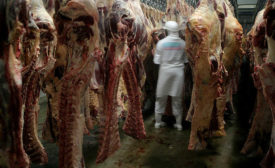Regulations
2020 Food Safety Report | Business Strategies
2020 Food Safety Report | Consultants Corner
Many small victories = 1 safe supply chain
The food-safety system in the U.S. works, if companies use the tools and innovations properly to protect consumers … and themselves.
Read More
Regulations & Legislation
Targeting Campylobacter
FSIS proposes new Campylobacter performance standards for NRTE comminuted poultry
Read More
Stay ahead of the curve. Unlock a dose of cutting-edge insights.
Receive our premium content directly to your inbox.
SIGN-UP TODAYCopyright ©2024. All Rights Reserved BNP Media.
Design, CMS, Hosting & Web Development :: ePublishing












